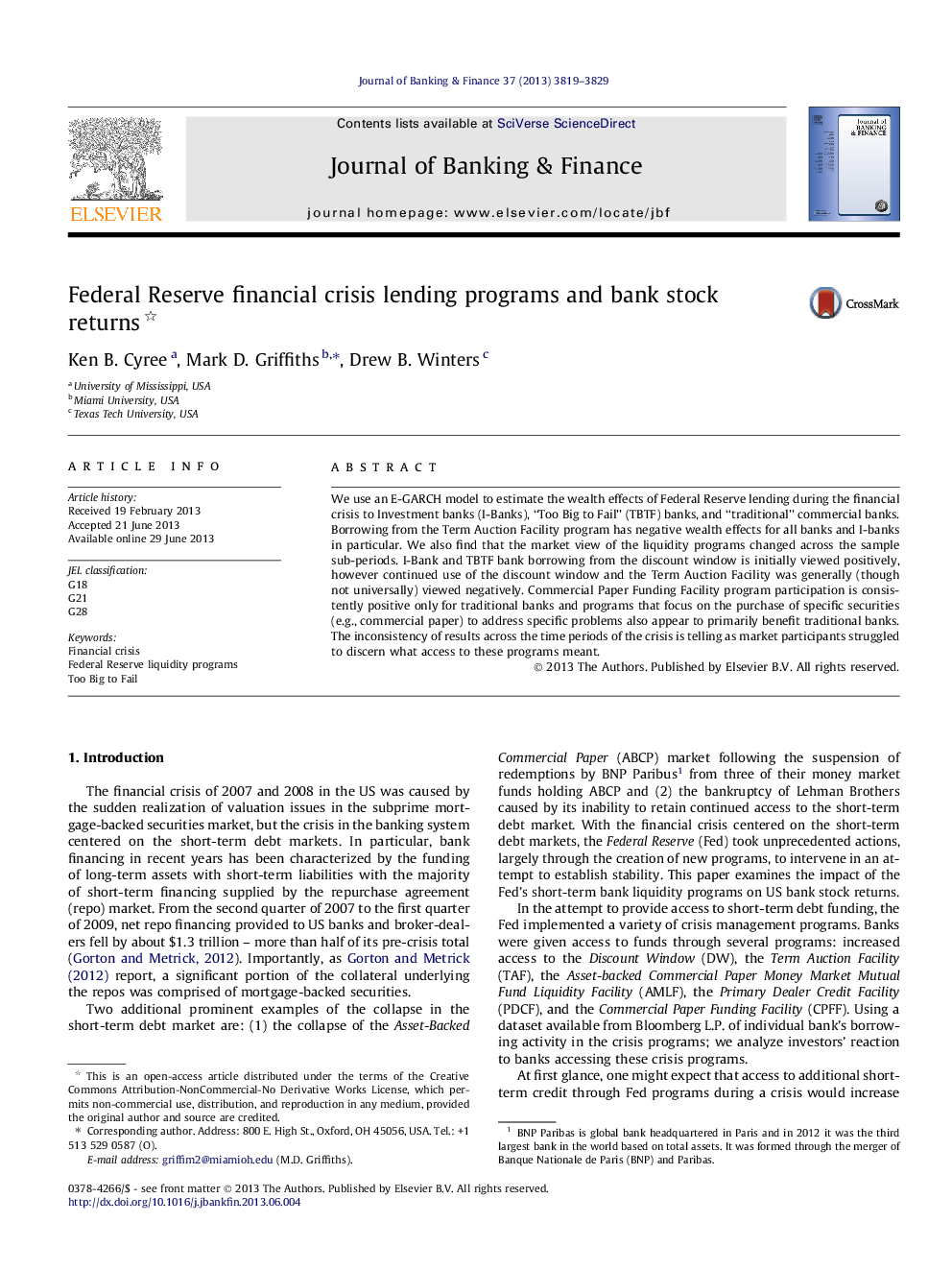| Article ID | Journal | Published Year | Pages | File Type |
|---|---|---|---|---|
| 5089212 | Journal of Banking & Finance | 2013 | 11 Pages |
Abstract
We use an E-GARCH model to estimate the wealth effects of Federal Reserve lending during the financial crisis to Investment banks (I-Banks), “Too Big to Fail” (TBTF) banks, and “traditional” commercial banks. Borrowing from the Term Auction Facility program has negative wealth effects for all banks and I-banks in particular. We also find that the market view of the liquidity programs changed across the sample sub-periods. I-Bank and TBTF bank borrowing from the discount window is initially viewed positively, however continued use of the discount window and the Term Auction Facility was generally (though not universally) viewed negatively. Commercial Paper Funding Facility program participation is consistently positive only for traditional banks and programs that focus on the purchase of specific securities (e.g., commercial paper) to address specific problems also appear to primarily benefit traditional banks. The inconsistency of results across the time periods of the crisis is telling as market participants struggled to discern what access to these programs meant.
Related Topics
Social Sciences and Humanities
Economics, Econometrics and Finance
Economics and Econometrics
Authors
Ken B. Cyree, Mark D. Griffiths, Drew B. Winters,
